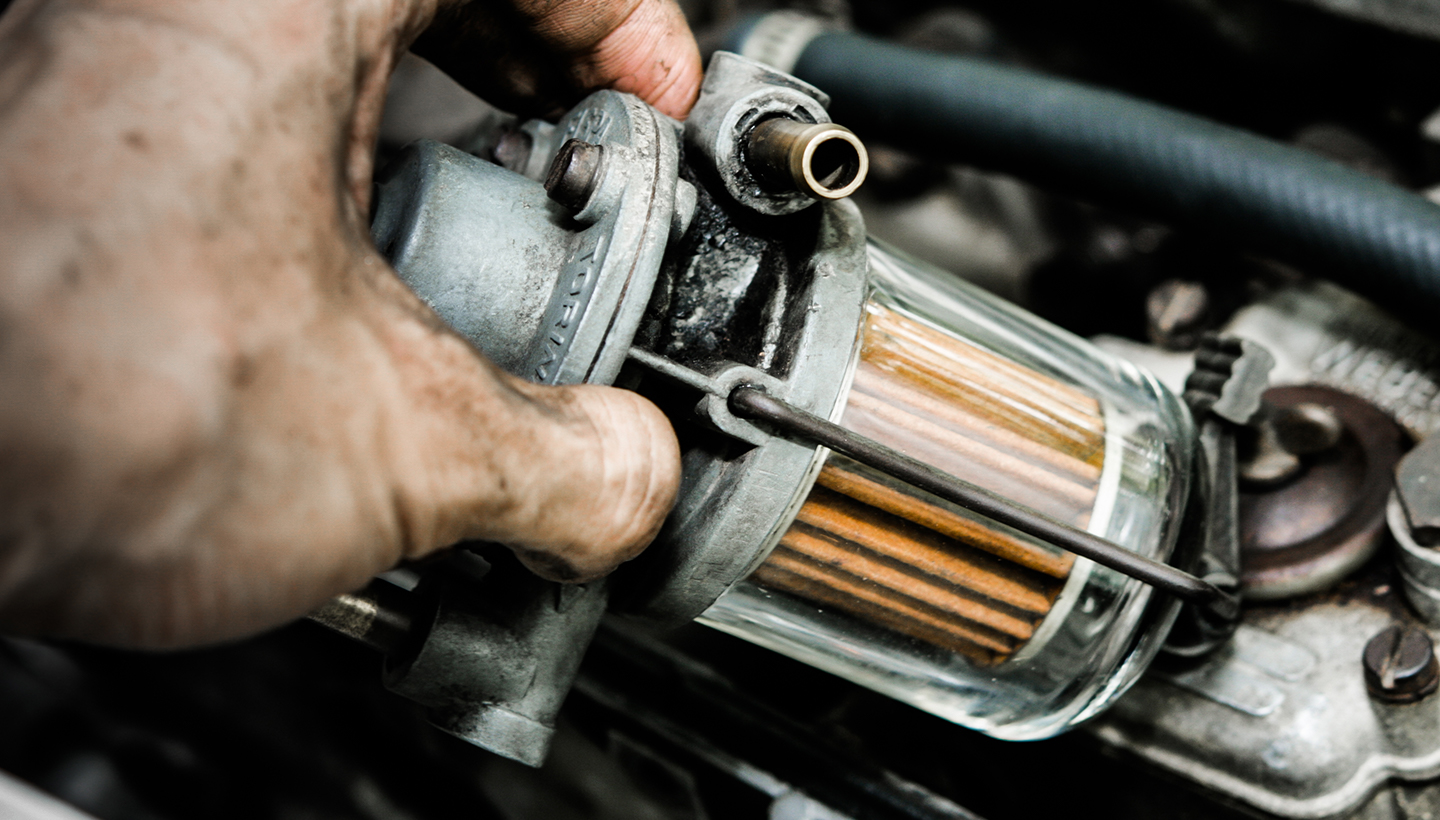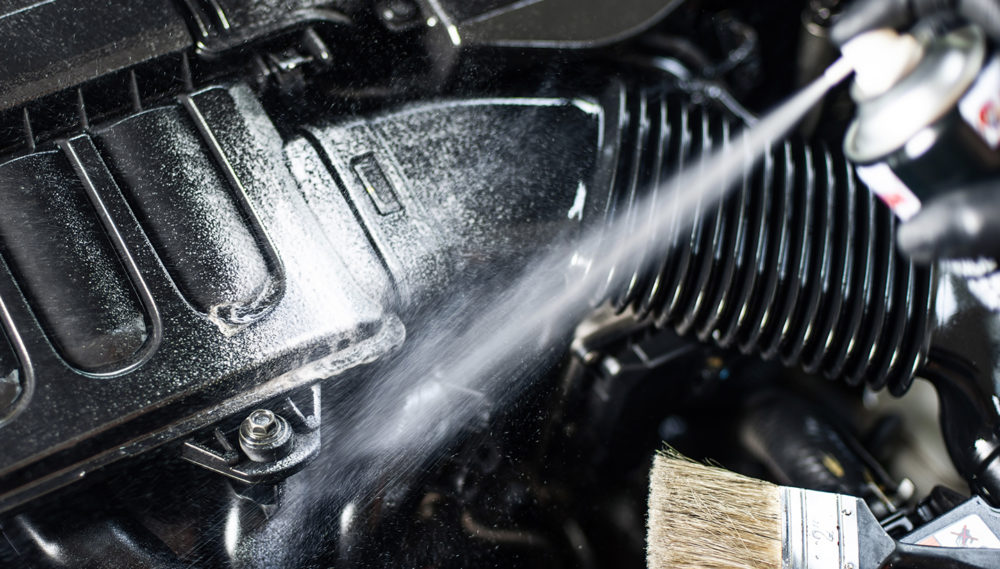5 Powerful Ways to Clean Car Engine Deposits
29 September, 2023

Cleaning car engine deposits can be done independently at home. You can use various specialized soaps available at automotive stores or easily use regular dishwashing soap found at home.
Cleaning car engine deposits on your own can maintain cleanliness and ensure optimal engine performance. It’s not uncommon for vehicle owners to overlook the importance of cleaning car engine deposits, eventually experiencing a decline in vehicle performance.
Incidents like these usually occur because uncleaned engine deposits lead to the accumulation of residues. The buildup of these residues, along with dirt, can cause damage and make the engine run hotter.
The abundance of residues and dirt not only heats up the car engine but also accelerates the wear and tear of other engine components. Therefore, maintaining cleanliness in the car engine is crucial and should be done periodically.
Don’t forget to regularly change the car’s engine oil and use the recommended engine oil to avoid problems in the future. To prevent future damage, it’s better to take preventive measures before experiencing more significant issues.
5 Effective Ways to Clean Engine Oil Deposits in Cars
Although often overlooked by some vehicle owners, cleaning engine oil deposits in cars has numerous benefits. In addition to making the engine look clean, cleaning engine oil deposits can extend the lifespan of the car engine.
To clean engine oil deposits, you can follow several methods below:
-
Replace old oil with new one
Before changing the oil in the car engine, make sure to turn off the engine. After that, open the engine oil cap and remove all the oil inside. Clean the remaining old engine oil using an oil pump or other tools. Make sure to dispose of the oil in the designated waste oil handling area.
-
Clean Accumulated Oil Deposits
After removing the old car oil, clean up the accumulated oil deposits at the bottom of the engine. Use various tools to clean it, such as sponges, brushes, or even a spray of water. Make sure to use gentle tools to avoid causing damage to the engine. Cleaning might unintentionally damage the outer parts of the engine.
-
Wash the engine
After cleaning the oil deposits at the bottom of the engine, wash the car thoroughly. This will help remove any remaining oil residues clinging to the bottom of the engine. Be sure to use cold water to clean your engine.
-
Add new lubricant
After thoroughly cleaning the exterior of the car’s engine with cold water, you need to refill the engine with new oil. New lubricants are needed to lubricate the engine parts. These lubricants also help protect the engine from corrosion. Be sure to use the type of oil and lubricant that is suitable for your engine.
-
Regularly change oil
Regular oil changes will keep your car’s engine efficient and functioning properly. Make sure to buy oil that is suitable for your engine type. This will help you keep your engine protected and working well.

Car Engine Oil Deposit Cleaners
There are several specific car engine oil deposit cleaners available at various automotive stores in various cities. Some specific car engine oil deposit cleaners that you can use are as follows:
-
Engine Conditioner Oil Deposit Cleaner
To clean the engine oil deposits in the combustion chamber, you can use an engine conditioner. This special liquid is easily obtained at various automotive stores at varying prices.
This engine conditioner is a foaming liquid that, when sprayed, will turn into a liquid. To use the engine conditioner, simply spray the liquid into the combustion chamber through the spark plug hole.
Here’s how to use the engine conditioner:
- Start the car engine first to heat it up so that the engine conditioner evaporates faster.
- Remove the spark plug from the engine.
- Spray the engine conditioner into the combustion chamber through the spark plug hole.
After following the above instructions, the engine oil deposit or dirt in the combustion chamber will dissolve and stick to the valve and piston head. In addition, this dirt will be expelled through the car’s exhaust.
-
Engine Flush Oil Deposit Cleaner
The second way to clean car engine oil deposits is to use an engine flush. Using an engine flush can dissolve deposits found in the cooler and oil channels.
To use it, follow the steps below:
- Add the engine flush through the oil filling hole when changing the engine oil.
- Unlike engine conditioner, which is done through the spark plug hole, engine flushing is done through the oil filling hole.
- Turn on the car engine until it gets hot enough for the radiator fan to turn on so that the engine flush can mix with the oil.
- Drain the oil mixed with the engine flush thoroughly and replace the engine oil with new oil.
Be sure to always change the engine oil regularly and use the recommended engine oil to keep the engine durable and clean.
-
Engine Degreaser Oil Deposit Cleaner
After using engine flush and engine conditioner on the inside of the car engine, the exterior should not be left behind. Many people want their car engine to look clean, and one way to do that is to use an engine degreaser.
On the exterior of the car engine, you can use an engine degreaser by spraying it on the visible oil deposits. After spraying, you can clean it with a brush, sponge, or microfiber cloth.
Cleaning the Car Engine with Dishwashing Soap
In addition to using the methods mentioned above, you can also use dishwashing soap commonly used at home. When using dishwashing soap, it needs to be mixed with a certain liquid for maximum results. Remember, this method only applies to cleaning the outside of the car engine.
Here’s how to clean the car engine with dishwashing soap:
- Pour enough dishwashing soap into a spray bottle.
- Mix water into the spray bottle.
- Make sure the water and dishwashing soap are mixed.
- Then, spray the liquid on areas where oil deposits accumulate. After spraying, let it sit for 10 to 15 minutes.
- After letting it sit, rinse the sprayed liquid with warm water to thoroughly clean the water and dirt.
- After cleaning, don’t forget to dry any remaining water with a microfiber cloth to ensure there is no leftover dirt.



